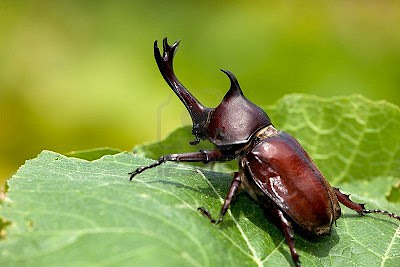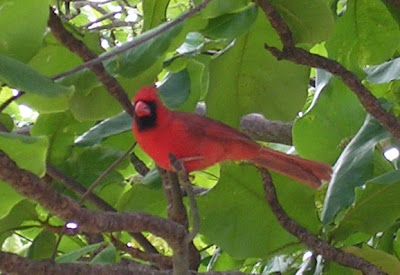Beauty Of Animal | Rhinoceros Beetle | The rhinoceros beetles or rhino beetle are a subfamily (Dynastinae) family of scarab (Scarabaeidae). Other common names - some for specific groups of rhino beetles - are, for example, Hercules beetle, beetles or unicorn horn beetle. There are over 300 known species of rhinoceros beetles.
Many rhinoceros beetles are known for their bizarre shapes and sizes. Famous types are, for example, the Atlas Beetle (Chalcosoma atlas), Common Rhinoceros Beetle (Xylotrupes ulysses), Elephant Beetle (Megasoma elephas), the European rhinoceros beetle (Oryctes nasicornis), Hercules Beetle (Dynastes hercules), Japanese rhinoceros beetle or kabutomushi (Allomyrina dichotoma) , Ox Beetle (Strategus Aloeus) and the Unicorn Beetle (Dynastes Tityus).
Description and ecology
Description and ecology
They are among the largest beetles and reached 150 + mm in length, but are completely harmless to people, because they do not bite or sting. Their common name refers to the characteristic horns only by the males of most species carried in the group. They have a horn on his chest and another horn to the front of the center chest. The horns are used to fight other males during the mating season and for digging.
The body of an adult rhinoceros beetle is covered with a thick exoskeleton. A pair of thick wing was on a different set of wings including skin, so that the flying rhinoceros beetle, though not very efficient, due to their large size and horns. The best protection they have from predators is their size and stature. Furthermore, since they are nocturnal, they avoid many of their enemies during the day. When the sun shines, they hide under logs or vegetation is to be of the few large predators enough to want to hide to eat them. If rhinoceros beetles are disturbed, can release some squeaks very loud hiss. The hissing squeak is covering by rubbing its abdomen against the ends of their wings. Rhino beetles are pretty well protected, and the adults usually live 2-4 months, sometimes longer.
Can a rhinoceros beetle larval stage for several years and is very time consuming. Feed the larvae feed on rotten wood and the adults on nectar, plant sap and fruit. First, the larvae hatch from the eggs and later to develop into pupae before adult status (see picture left) to reach. The female lays 50 eggs on average. Contrary to what its size may mean eating adult rhinoceros beetle is not large amounts, in contrast to their larvae, which eat a significant amount of deadwood.
The human use
Rhino beetles are very popular as pets in parts of Asia. This is partly due to the bare to maintain clean, easy and safe to handle. In Asia, male beetles are used for gambling fights. Since men naturally tend to have to fight each other for the attention of the females, they are used to fight it. To get the two male beetles to fight Lock, a female beetle or a small noisemaker is used to duplicate the female lure.
Rhino beetles are very popular as pets in parts of Asia. This is partly due to the bare to maintain clean, easy and safe to handle. In Asia, male beetles are used for gambling fights. Since men naturally tend to have to fight each other for the attention of the females, they are used to fight it. To get the two male beetles to fight Lock, a female beetle or a small noisemaker is used to duplicate the female lure.
Entomologist Séverin Tchibozo suggests the larvae contain lots of protein (40%), as a chicken (20%) and beef (18%) and larvae that had a protein source for a large population. Are Some species can be important pests such as tree plantations. In general, however, are rhinoceros beetle population density is not as high as in some other insect pests, and food trees, which are usually already sick or die, other causes are preferred. Some species' larvae, but even attack healthy trees or root vegetables, and when they occur in large numbers to cause significant economic damage.
Find Here The Kinds Of Animals and Flora and Fauna




























































